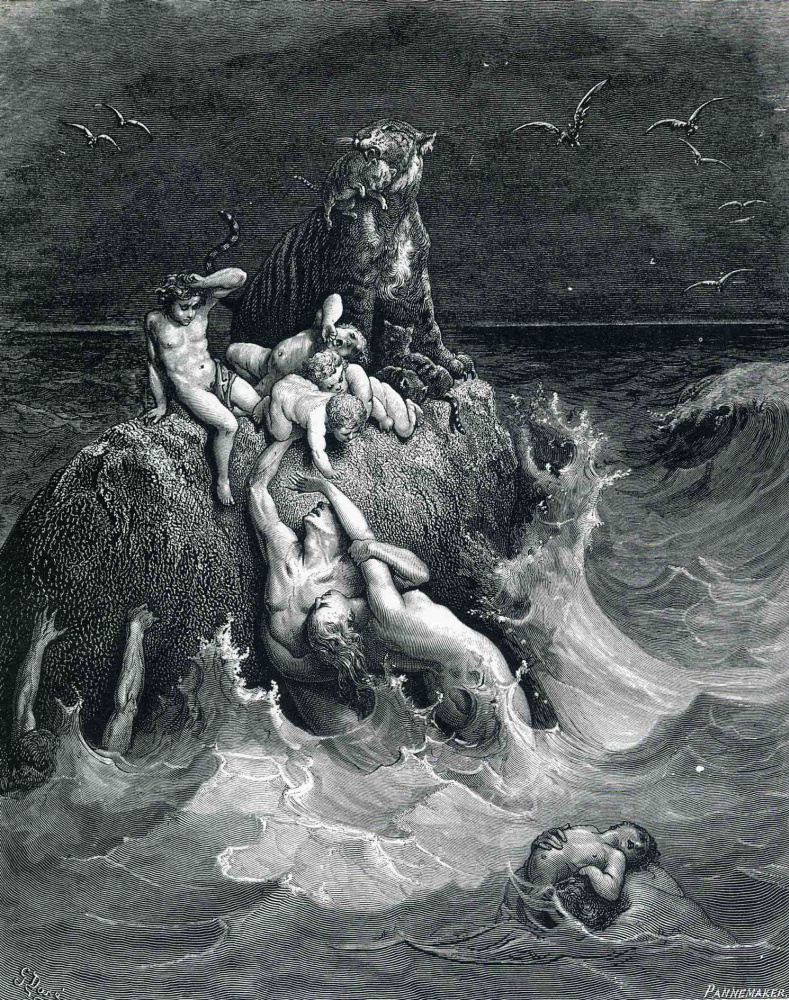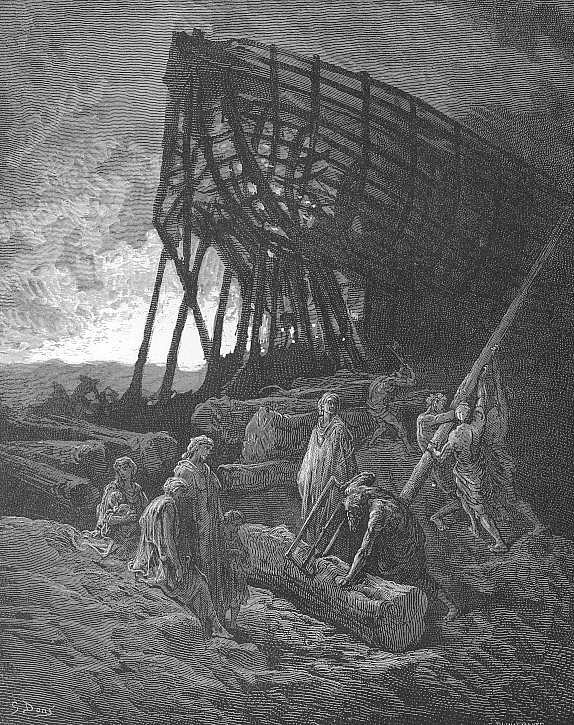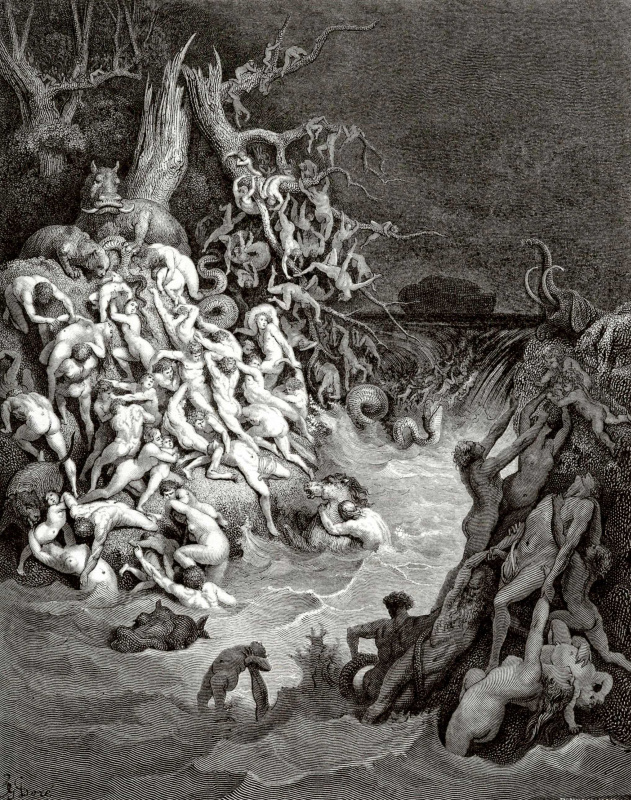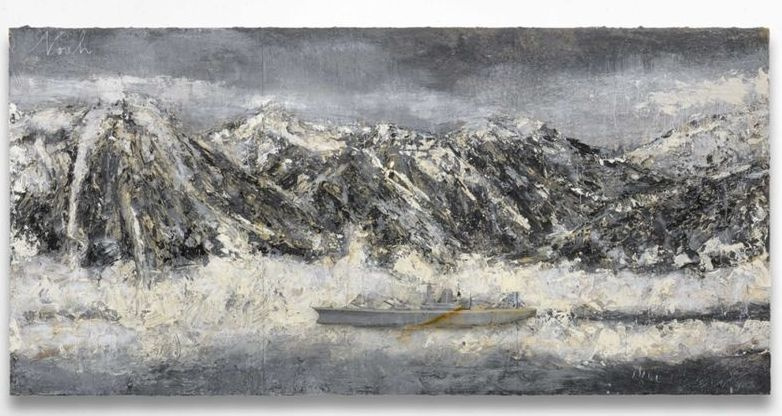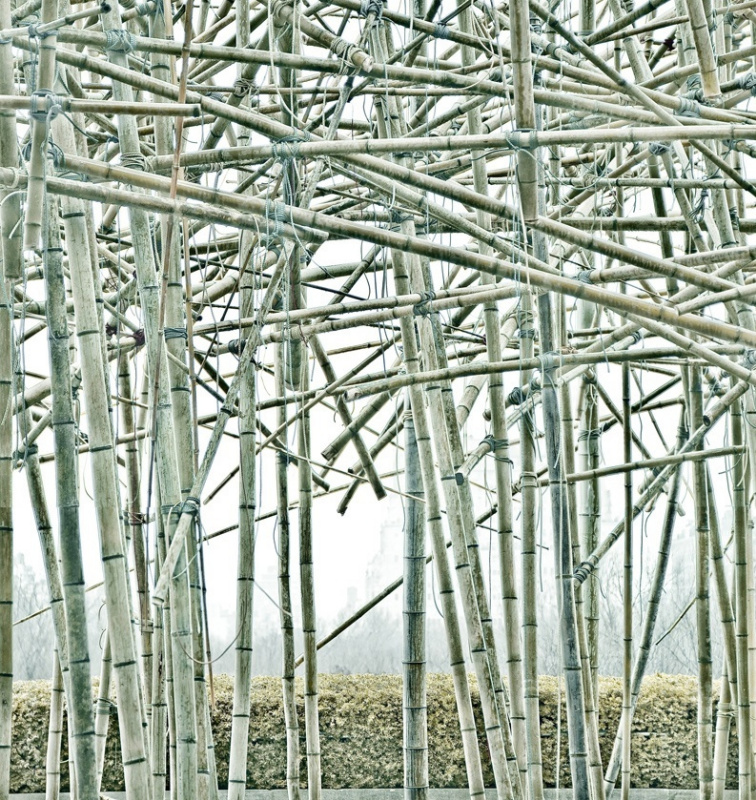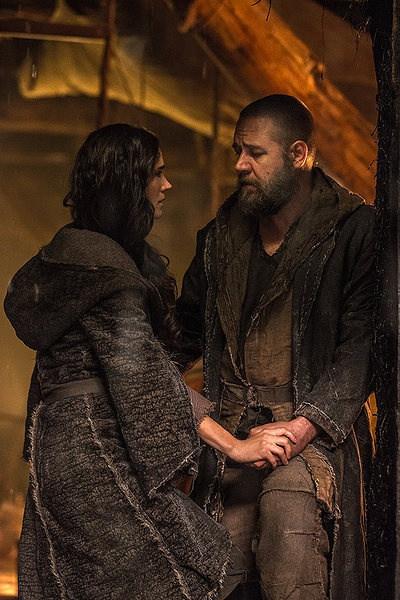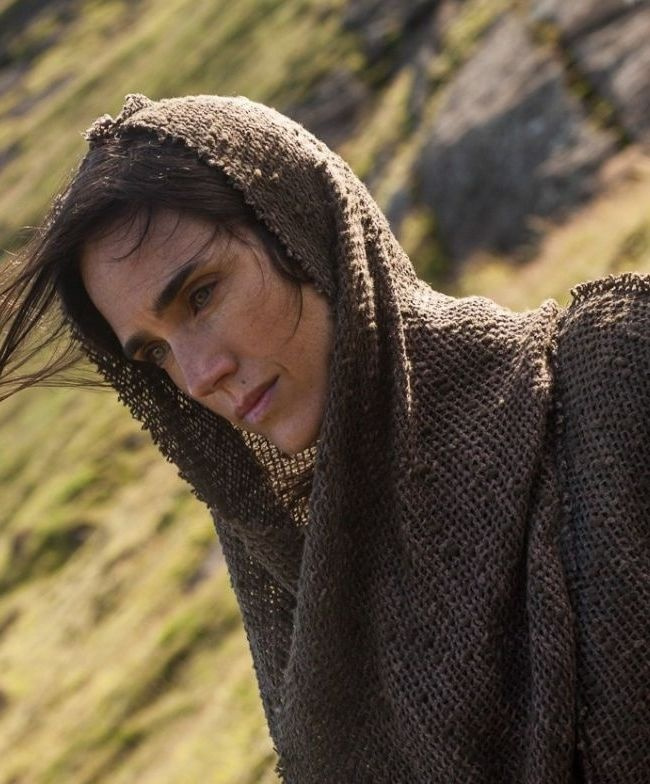In Darren Aronofsky’s Noah film acquaintance with a biblical story turned into a blockbuster can be considered as a trip to a museum. The filmmakers were inspired not only by reading the Old Testament, but also by studying albums with the works of contemporary and old artists, therefore the movie also resembles an art exhibition that brought together authors ranging from 18th century born Francis Danby to our contemporary Anselm Kiefer. So, welcome to the first hall…

The flood
1855
Gustave Doré (1832—1883)
Prominent French illustrator and printmaker, whose work includes a series of illustrations for the Bible.Darren Aronofsky admitted in an interview that in one of the most impressive scenes of his film he reproduced Doré's work entitled The Flood: it depicts sinners desperately clinging to life and the only rock not yet swallowed by water.
Doré became famous for the intricate play of light and shadow in his prints. It looks like Noah’s cinematographer Matthew Libatique and the effects creators have also taken advantage of his legacy, pumping up film drama with fifty shades of grey.
Here is a poster and a still from the film, obviously hinted by Gustave Doré:
Francis Danby (1793—1861)
Irish romantic artist, landscape and marine painter. In his work, he paid attention to the Old Testament apocalypse. On one of his canvases, dedicated to the Flood, there is also a rock dotted with sinners thirsting for salvation.The authors of the film did not personally admit that they borrowed the mise-en-scène from this artist either, however, viewers with a powerful art background agree that Darren Aronofsky, like any talented person, willingly borrows from everywhere, bringing together Gustave Doré, Francis Danby and his own fantasies about the famous biblical story in one shot. And these fantasies, by the way, are very long-lasting. The story of Noah captured the mind and imagination of Aronofsky, when he was 13, and his literature teacher set him a task to compose some kind of life poem; for some reason, he rhymed the plot about the Flood. It seems that since then the director often looked at the albums with the works by Danby and Doré.
The flood
XX century
Anselm Kiefer (born 1945)
One of the most famous contemporary artists in Germany, where he was born, and France, where he has lived and worked for a long time. The main theme in his work is the nature of Nazism in particular and the destructive influence of the past on the present from a close-up view point.The past threatening the present is precisely the plot of the Flood. And Kiefer even has canvases that comprehend this plot. But the production designer of the Noah film Mark Friedberg was interested not specifically in them, but rather in the synthetic, "garbage" technique of Kiefer, who applied soil and ash, lead and grass, salt and acid to the canvas in addition to oil.
The most spectacular scenes of Noah were created by computer graphics specialists. Imagine, not a single real animal is involved in the film — the moving ones were drawn by special effects magicians, and the sleeping ones were just props. At the same time, the ark was actually built, even in two copies: one to shoot it from the outside, and the second for interior scenes. The director decided that the actors should be able to move around the ark and touch its walls with their hands.
So that the new, clean ark did not look like an IKEA product, it was smeared with resin, and then sprinkled with grass, straw, volcanic ash. The ashes were brought from Iceland, where they filmed some nature, and the ark was erected in the vicinity of New York (during the process, Hurricane Sandy hit the city and the built ark, and it became completely gloomy and significant).
Here is Russell Crowe’s Noah building an Anselm Kiefer-style ark:
So that the new, clean ark did not look like an IKEA product, it was smeared with resin, and then sprinkled with grass, straw, volcanic ash. The ashes were brought from Iceland, where they filmed some nature, and the ark was erected in the vicinity of New York (during the process, Hurricane Sandy hit the city and the built ark, and it became completely gloomy and significant).
Here is Russell Crowe’s Noah building an Anselm Kiefer-style ark:

Now take a look at how it resembles Anselm Kiefer’s paintings from the Parsifal series, dedicated to the hero of a completely different myth, King Arthur and his knights. Mark Friedberg borrows wisely! He needs the spiritual coincidence, not the literal.
While developing the concept for Noah, production designer Mark Friedberg talked to Anselm Kiefer and wondered how Kiefer’s description of the essence of his own work coincided with that of Darren Aronofsky’s film. Kiefer said that all of his work is "about despair, beauty and cruelty".
As for the appearance of the ark, after consulting with Kiefer and inspired by his paintings and installations, Friedberg decided to make the iconic floating craft look rough and hastily made: Noah did not build eternal beauty, but a reliable, quick and easy-to-build shelter in which you can wait out the bad weather and not drown.
Brothers Mike and Doug Stern (born 1961)
American twin artists, whose gigantic Big Bamboo installations have been exhibited at the Metropolitan Museum of Art in New York and at the Venice Biennale. Like Noah’s ark, their bamboo sculptures (more than two thousand plant stems were tied for each of them!) are designed to be walkable inside.

Mark Friedberg needed the Stern brothers not only as technical consultants constructing a reliable structure of natural materials. Their bamboo labyrinths look quite inspiring: in Darren Aronofsky’s film, almost exact copies of the Stern brothers' bamboo structures appear as scaffolding. When the Flood begins and the arriving water raises the ark above the ground, the scaffolding crumbles picturesquely, indicating the metaphorical collapse of everything antediluvian.
Compare the modern sculpture of the Sterns and Noah’s "craftwork" in the film:
Compare the modern sculpture of the Sterns and Noah’s "craftwork" in the film:
God told Noah to build his ark of shittim wood. Shittah certainly doesn’t grow on Long Island. And modern botanists can only make assumptions about what could be meant under the word shittim. Perhaps a cypress. They took just any material for the ark in cinema; in addition to natural wood, dyed plastic and polystyrene, as well as a metal frame
were used during the construction.
At that, they tried to achieve authentic sizes, which is why they had to take a closer look at the work of the giant sculptors Sterns. Aronofsky converted the Biblical cubits into meters and found that the ark should be 18 meters high (a six-storey building) and 150 meters long. Only a third of the whole length was built, and the remaining 100 meters were completed through computer graphics.
It should be noted that the filmmakers ignored the creativity of the artists who depicted the ark sharp-nosed. Their movie ark — they consider it the most correct in the world — is more like a floating rectangular warehouse. They say it didn’t need a keel, because Noah was not going to steer the ship or sail anywhere. He just needed some time to stay afloat, until the water dries out. Plus obviously, it was not Noah who was the captain on the ark, but the One who initiated the flood.
At that, they tried to achieve authentic sizes, which is why they had to take a closer look at the work of the giant sculptors Sterns. Aronofsky converted the Biblical cubits into meters and found that the ark should be 18 meters high (a six-storey building) and 150 meters long. Only a third of the whole length was built, and the remaining 100 meters were completed through computer graphics.
It should be noted that the filmmakers ignored the creativity of the artists who depicted the ark sharp-nosed. Their movie ark — they consider it the most correct in the world — is more like a floating rectangular warehouse. They say it didn’t need a keel, because Noah was not going to steer the ship or sail anywhere. He just needed some time to stay afloat, until the water dries out. Plus obviously, it was not Noah who was the captain on the ark, but the One who initiated the flood.
El Anatsui (born in 1944)

An African artist known for cloth-like wall art objects, the "fabric" of which consists of aluminium caps from bottles and cans sewn together with copper wire. Along with the aforementioned Anselm Kiefer, he was a source of inspiration for Noah costume designer Michael Wilkinson. So that you do not doubt the greatness of the plan, the work in the photo above is called In the World But Don’t Know the World.
"Darren and I wanted to create a unique look for the film, one that combined lots of different influences, from ancient history to cutting edge modern couture," says Wilkinson. "The idea was to create a world that reverberated with lots of associations, but was not specific to one time or one place. So as well as researching the clothes from biblical times, I was inspired by contemporary fashion designers such as Rick Owens, Raf Simons and Helmut Lang, by African and Middle Eastern traditional clothes, by video game characters and by contemporary artists such as Anselm Kiefer and El Anatsui."
The costume designer claims that, along with Anatsui, Raf Simons, who now heads the Dior Fashion House, also influenced the style of the Old Testament heroes of the film.

To be honest, I did not find any new look style puffy skirts or thin waists in Darren Aronofsky’s Noah. In my opinion, the influence of Kiefer and Anatsui is more powerful and noticeable. However, judge for yourself.






